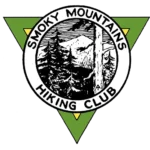Did You Know?
There are approximately 96 miles of the A.T. in North Carolina, but the Trail runs along the Tennessee/North Carolina border for approximately 220 additional miles. As the A.T. ascends to the High Country of the state line, hikers traverse the highest mountains along the Trail, including several above 6,000 feet.
Cleared by homesteaders in the 1800s, the 360-degree views from the 4,600-foot summit at Max Patch are exceptional and relatively easy to access. The open bald provides important early successional habitat for pollinators and birds – habitat that ATC and local partners have worked to rescue from overuse since 2017.
The A.T. also comes to the first town heading north that it passes directly through: the A.T. Community of Hot Springs.








